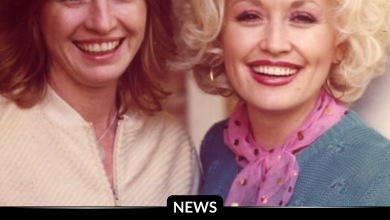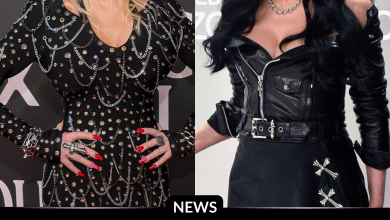Behind the Iconic Audrey Hepburn Poster: How Robert E. McGinnis Crafted a Timeless Masterpiece
OPINION: This article may contain commentary which reflects the author's opinion.
Robert E. McGinnis, who passed away at the age of 99 on March 10, 2025, was a renowned American illustrator whose work left an indelible mark on mid-20th-century visual culture. Known for over 1,200 paperback covers and more than 40 movie posters, McGinnis’s artwork helped define the aesthetics of an era. Among his most iconic contributions is the 1961 Breakfast at Tiffany’s poster featuring Audrey Hepburn—an image that has become synonymous with the film and Hepburn’s legendary role as Holly Golightly.
McGinnis’s work spans genres from espionage to romance, but it is his movie poster designs, particularly for Breakfast at Tiffany’s, that elevated his status as one of the greats of film art. This article examines how McGinnis created the iconic Breakfast at Tiffany’s poster, considering the context of his career, his artistic techniques, and the cultural impact of the piece.
Early Career and Rise to Fame
Born in Cincinnati, Ohio, on February 3, 1926, McGinnis began his career as a cartoonist in 1947, later transitioning to cover illustrations for magazines such as True Detective in the mid-1950s. By 1958, McGinnis painted his first paperback cover, marking the start of an illustrious career that saw him become the go-to artist for numerous book covers in the espionage, romance, and Western genres. His “McGinnis Woman”—characterized by long legs, alluring features, and an enigmatic presence—became his signature style and is present in works for authors like John D. MacDonald and Erle Stanley Gardner.
However, it was his transition to movie posters that would cement his place in pop culture history. McGinnis’s work on Breakfast at Tiffany’s, his first film assignment, remains one of his most significant and widely recognized contributions to film art.
The Creation of the Breakfast at Tiffany’s Poster
In 1961, McGinnis was tasked with creating the poster for Breakfast at Tiffany’s, directed by Blake Edwards and based on Truman Capote’s novel. Starring Audrey Hepburn as the iconic Holly Golightly, the film’s themes of glamour, independence, and sophistication made it the perfect subject for McGinnis’s meticulous and photorealistic artistic style.
A Personal Touch in the Artwork
Reports indicate that McGinnis’s wife posed for him at home while holding their family cat, which was later featured on Hepburn’s shoulder in the final illustration. This personal involvement added a layer of authenticity and emotional depth to the artwork, capturing Hepburn’s whimsical yet elegant presence in the film. The cat, an integral part of Hepburn’s character, became a recognizable symbol of the film’s charm, and McGinnis’s attention to detail in this scene played a significant role in its visual success.
Artistic Techniques
While McGinnis did not provide detailed accounts of the exact methods he used to create the poster, his general approach involved a high level of precision and attention to detail. Known for his use of traditional techniques such as oil painting, McGinnis’s work was carefully crafted to capture texture and light, giving his pieces a vivid, photorealistic quality. For Breakfast at Tiffany’s, McGinnis likely worked from photographs or sketches to ensure the poster’s accuracy while maintaining a strong visual impact.
The poster, featuring Hepburn in a black cocktail dress, black opera gloves, and holding a cigarette holder, is set against a backdrop of rich color, contributing to its glamorous and sophisticated aesthetic. The design was distributed folded, with some versions being linen-backed for preservation, ensuring the poster’s longevity and impact.
Cultural Impact and Unforeseen Legacy
McGinnis, who modestly stated that he “never dreamed [the poster] would be the most printed thing in history,” recounted an amusing anecdote from his life where he saw the poster in a Central Park kiosk. He humorously told the vendor, “You know, I did that,” only to be met with skepticism. Despite the initial lack of recognition, the poster became ubiquitous, featured in countless forms and locations, solidifying McGinnis’s place in film art history.
Today, the Breakfast at Tiffany’s poster remains one of the most sought-after vintage film posters, with auction prices reflecting its status as a cultural touchstone. It’s an image that continues to symbolize Hepburn’s legacy, representing the film’s glamour and the timeless appeal of both the actress and her character.
The Unseen Legacy of McGinnis’s Work
While McGinnis’s contributions to film art, especially with Breakfast at Tiffany’s, are undeniable, detailed insights into his creative process are relatively scarce. Interviews and articles hint at his methodical approach but leave many questions about the exact timeline of his work and the tools he used. It’s clear, however, that his ability to capture human expression and emotion was central to his success. His influence can be seen not just in the realm of film posters, but in the broader cultural legacy he helped shape through his art.
Conclusion
Robert E. McGinnis’s creation of the Breakfast at Tiffany’s poster is a testament to his skill and lasting impact on film art. His work transcended the boundaries of commercial illustration, bringing an iconic image to life that continues to resonate with audiences worldwide. As one of the most celebrated illustrators of his time, McGinnis’s contributions remain an essential part of cinematic history, with the Breakfast at Tiffany’s poster serving as a lasting tribute to his artistic vision and enduring legacy in pop culture.



